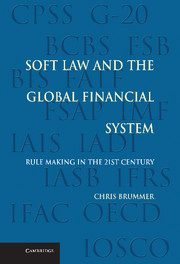Book contents
- Frontmatter
- Contents
- Acknowledgments
- Key Abbreviations
- Introduction The Perils of Global Finance
- 1 Territoriality and Financial Statecraft
- 2 The Architecture of International Financial Law
- 3 A Compliance-Based Theory of International Financial Law
- 4 How Legitimate Is International Financial Law?
- 5 Soft Law and the Global Financial Crisis
- 6 The Future of International Financial Law
- Index
- References
3 - A Compliance-Based Theory of International Financial Law
Published online by Cambridge University Press: 05 June 2012
- Frontmatter
- Contents
- Acknowledgments
- Key Abbreviations
- Introduction The Perils of Global Finance
- 1 Territoriality and Financial Statecraft
- 2 The Architecture of International Financial Law
- 3 A Compliance-Based Theory of International Financial Law
- 4 How Legitimate Is International Financial Law?
- 5 Soft Law and the Global Financial Crisis
- 6 The Future of International Financial Law
- Index
- References
Summary
In this chapter, we explore why – and to what extent – international financial law “matters.” Whatever their organizational diversity, the international institutions discussed in the previous chapter are ultimately designed to generate standards to be implemented across legal systems of different cultures and legal traditions. When international financial rules and standards are adopted robustly across borders, regulators are better able to ensure adequate cross-border supervision of market participants, no matter where they operate. Opportunities for arbitrage and regulatory competition are dramatically reduced, and enforcement cooperation and information sharing among jurisdictions is enhanced.
Thus ultimately, the effectiveness of international financial organizations depends on regulators complying with the rules that have been agreed to. As we have already seen, however, financial regulatory standards often have disparate costs and benefits across jurisdictions and are thus rarely self-enforcing. If a regulator deems certain rules disadvantageous to its domestic markets, it may fail to honor its commitments. Likewise, if a regulator “lacks confidence that others will do what they say, it has no incentive to take action itself.”
- Type
- Chapter
- Information
- Soft Law and the Global Financial SystemRule Making in the 21st Century, pp. 115 - 176Publisher: Cambridge University PressPrint publication year: 2011



